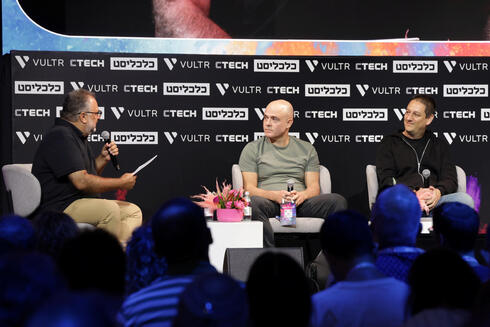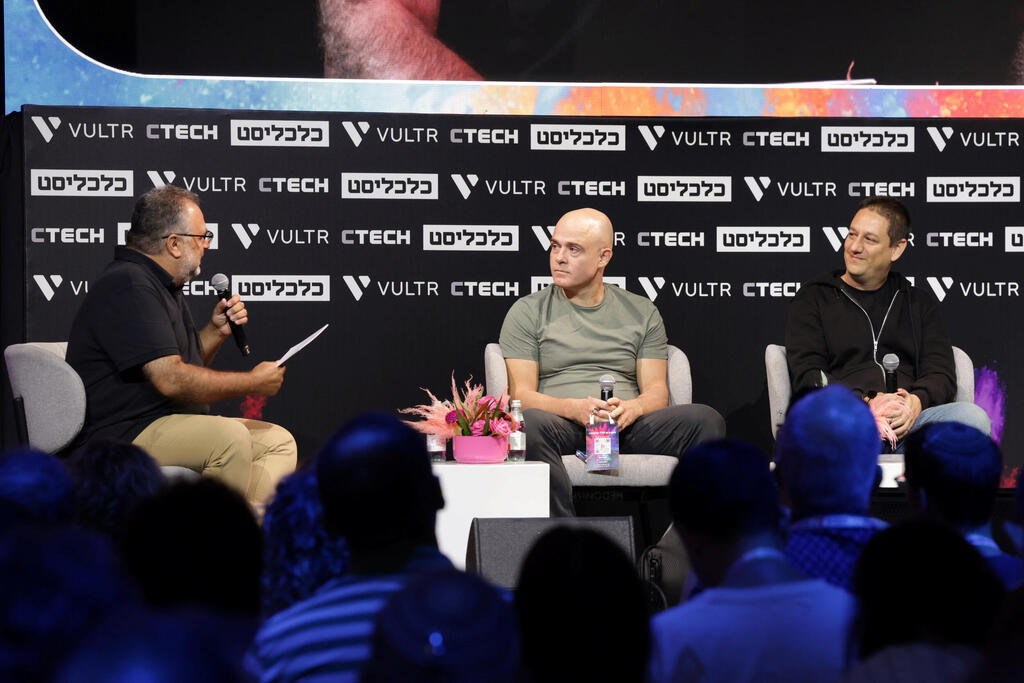
"The AI revolution will change all the tools we use for content creation"
Dr. Zeev Farbman, co-founder and CEO of Lightricks, was speaking on a panel at Calcalist's AI conference. Daniel Shichman, CEO and co-founder of WSC Sports: "We will see more proactive tools that will provide us with personal content without intervention."
"In the summer of 2022, when DALL-E 2, OpenAI's image generation tool, was released, the founder of a company we acquired received a beta version of the software. I tried it out, and within five minutes, I realized our entire field was about to change. The system solved problems we used to need a PhD to solve," said Dr. Zeev Farbman, co-founder and CEO of Lightricks, at Calcalist's AI Conference.
Along with Farbman, Daniel Shichman, CEO and co-founder of WSC Sports, participated in the panel at the conference, moderated by CTech Editor-in-Chief Elihay Vidal. The panel discussed future developments in media creation tools in light of the AI revolution and the potential risks they pose.
1 View gallery


AI Panel (from left) Elihay Vidal, Zeev Frabman, Daniel Shichman.
(Photo: Orel Cohen)
Zeev and Daniel, we’re operating in a field that often feels like science fiction. What’s the most mind-blowing interaction you've had with AI recently?
Shichman: "In the last two weeks, I've seen new tools that allow people with zero programming knowledge to use three tools and develop complex systems. You can take a screenshot with Claude and develop an intricate product. Within two months, people with no programming background will be able to create sophisticated code on their own."
Daniel, are your company’s programmers using these tools?
Shichman: "Absolutely. One of the biggest challenges is getting experienced programmers, who are used to working independently, to trust these new tools. But the entire industry understands this is where we’re headed, and the potential is incredible."
What drives the development at your companies more: technology or customer demand?
Farbman: "In our field, we’ve realized the paradigm has shifted. We used to do graphics one way, but now we’re transitioning to a new approach. The tools available for social media are changing everything. We see this as an opportunity to enter new markets."
Farbman added, "Ultimately, customers want to create content more cheaply, but they don’t fully grasp how to do that during this paradigm shift."
Daniel, can you explain what WSC Sports does?
Shichman: "We have a platform that produces content from sports broadcasts. We tailor content for fans on any platform. We work with 500 organizations. For example, if you’ve consumed sports highlights on a platform, it likely went through our system, which receives feeds from over 1,000 games and analyzes everything—from baskets to fan excitement or announcer commentary. Based on this data, clients can request customized content, like highlights from half of a game."
Are your customers TV channels and rights holders?
Shichman: "Exactly. We’re a B2B company that allows the creation of any type of sports content for fans, without needing video editing skills. If you’ve watched a highlight, there’s a good chance it was created by us. As a product company, the value we provide to the customer is our main driver."
With access to all this content, do you generate new ideas from the data you collect?
Shichman: "Absolutely. We observe consumer behavior, like a preference for vertical content or for player-focused content over broader game summaries. We use this data to help our clients make informed decisions, such as increasing merchandise sales for specific sports. At its core, sports are content, and we help our clients better understand their fans."
Daniel, what type of content works best: zoom-ins on players or game summaries?
Shichman: "Zoom-ins on players, without a doubt. Players have moved to the forefront. Player-related content is our most viewed material."
Zeev, I tried the new LTX Studio, which is still in beta, and for the first time, I felt like I could transform abstract thoughts into visuals. Is your product aimed at consumers, or more at businesses?
Farbman: "We’re targeting professionals involved in pre-production—advertising agencies, people planning TV series or films in their early stages. They need a way to quickly share ideas and get funding. As technology advances, our tool will cover more of the production funnel since parts of the process will be doable using our system."
Let’s look 5–10 years ahead. What will content creation and media look like?
Farbman: "The tools we use for content creation will completely change. Our interactions with machines, the interfaces we use—everything is going to evolve. Once we can create graphics affordably, virtual worlds, currently reserved for media giants, will be possible on indie budgets. Right now, a modern film's budget is astronomical. As we reduce costs, we’ll see incredible things."
Shichman: "Today, we’re used to using certain tools, but in the future, content creation will become proactive. You’ll scroll through social media, and content will be tailored specifically for you. There’s still progress to be made, but the world is shifting toward proactive, user-centered systems. These systems will eventually teach us and become more autonomous."
What’s your take on the future—do you lean toward a 'Terminator' scenario where machines destroy us, or a 'Her' scenario where humans and machines coexist?
Shichman: "Let’s hope we’re not heading for a 'Terminator' situation. Humanity is resilient and driven. Hopefully, we’ll find a way to manage these challenges."
Farbman referred to Yoom CEO Gilad Talmon, who was scheduled to attend the conference but was called into IDF reserves: "When someone is in the reserves, you can’t ignore the possibility of a real threat. Let’s hope for the best."













